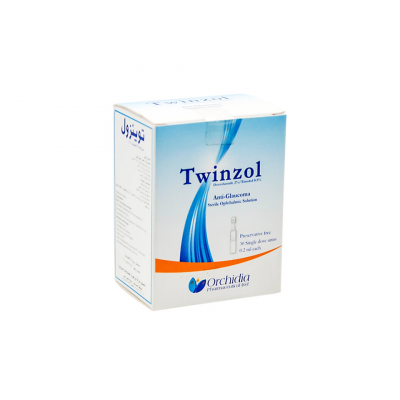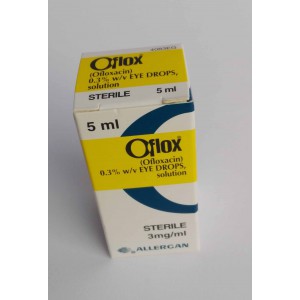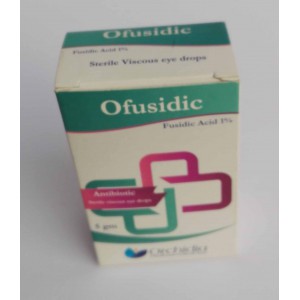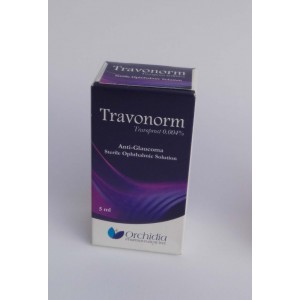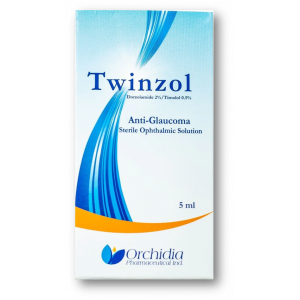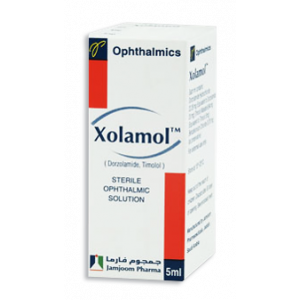- Anti-hestaminic & Respiratory Drugs (20)
- Anti-inflammatory Drugs (192) +-
- Baby & Mom (1319) +-
- Baby & Mom > Bath, skin & Hair > Skin Care > wibes (52)
- Beauty (2981) +-
- Beauty > Skin Care > whitening (295)
- Chemotherapy & Immune Response (882) +-
- Chemotherapy & Immune Response > ANTI-FUNGAL (11)
- Chemotherapy & Immune Response > Chemotherapeutic Agents > Hormone Antagonists >Enzyme Inhibitors (289)
- CIRCULATORY DISTURBANCE AGENTS (24)
- Diet & Fitness Products (280) +-
- DRUG AFFECTING CENTRAL NERVOUS SYSTEM (191)
- HEMATOLOGY (39)
-
Medical Supplies (503)
+-
- Chemicals & Disinfectants (19)
- Dental Supplies (31)
- Devices & Instruments (10)
- Diabetic Supplies (121)
- General Medical Supplies (21)
- I.V & Medical Solution (0)
- Intensive Care Unit & Anesthesia Supplies (0)
- KIDNEY UNIT SUPPLIES (21)
- Lab Supplies (3)
- Miscellaneous (21)
- Neonatal Unit Supplies (0)
- Operation Room Supplies (2)
- Sanitary (5)
- Sterilization Supplies (0)
- Surgical Sutures (4)
- Syringes (3)
-
Medicines & Health (2637)
+-
- Allergy & Sinus (95)
- Children's Health Care (54)
- Cough, Cold & Flu (277)
- Digestive Health & Nausea (225)
- Ear, Nose & Throat Care (179)
- Eye Care (117)
- Feminine Care (325)
- Foot Care (9)
- Orthopaedic Appliances (0)
- Pain Relief & Management (237)
- Pill Organizer (2)
- Skin Treatments (811)
- Sleep & Snoring Aids (2)
- Support & Braces (7)
- Medicines & health > Gout releif (42)
- Natural & Organic Products (81) +-
- OTC > Analgesics > Anti-inflammatory Drugs (44)
-
Personal Care (3244)
+-
- Bath & Body (271)
- Deodorant & Anti-perspirants (186)
- Ear, Nose & Throat Care (175)
- Eye Care (124)
- Feminine Care (374)
- Foot Care (17)
- Hair Care (472)
- Home Tests & Monitorings (14)
- Incontinence (7)
- Lip Care (22)
- Massage & Relaxation (17)
- Natural & Organic Personal Care (7)
- Oral Care (88)
- Pregnancy & Fertility (64)
- Shaving & Grooming (65)
- Sun Care (79)
-
Prescription Drugs (2877)
+-
- Analgesics (181)
- Cardiovascular System (374)
- Drugs Affecting Musculoskeletal System (65)
- Drugs Used In Infections (56)
- Ear & Nose Drugs (2)
- Endocrine System (176)
- Gastrointestinal Tract (242)
- Gastrointestinal Tract > Hepatology > Liver treatment (61)
- GYNECOLOGY (2)
- Miscellaneous (11)
- NEPHROLOGY > URINARY SYSTEM > RENAL DISORDERS > URINARY TRACT DISORDERS (46)
- NEUROLOGY (222)
- Nutrients & Blood Electrolytes (2)
- Respiratory System (154)
- SKIN > NAILS > HAIR > TOPICAL PREPARATIONS (75)
- Vaccines (1)
- Prescription drugs > Cardiovascular system > Anti-hypertension drugs (242)
- Sexual Wellness (301) +-
- Vitamins & Minerals Supplements (1197) +-
Ex Tax: 96EGP
Example
You can return the product within 14 days of purchase.
ReturnsYou can return the product within 14 days of purchase.

Dorzolamide And Timolol (Ophthalmic Route)
Description and Brand Names
US Brand Name:
Cosopt
Cosopt Ocumeter
Cosopt Ocumeter Plus
Cosopt PF
Descriptions:
Dorzolamide and timolol ophthalmic (eye) drops is used to treat increased pressure in the eye caused by open-angle glaucoma or a condition called hypertension of the eye. Both eye conditions are caused by high pressure in your eye and can lead to pain from pressure in your eye and then can eventually harm your vision. This medicine can help you keep your sight by reducing the pressure in your eye and stopping eye pain.
This medicine is available only with your doctor's prescription.
This product is available in the following dosage forms: Solution
Before Using
In deciding to use a medicine, the risks of taking the medicine must be weighed against the good it will do. This is a decision you and your doctor will make. For this medicine, the following should be considered:
Allergies
Tell your doctor if you have ever had any unusual or allergic reaction to this medicine or any other medicines. Also tell your health care professional if you have any other types of allergies, such as to foods, dyes, preservatives, or animals. For non-prescription products, read the label or package ingredients carefully.
Pediatric
Appropriate studies performed to date have not demonstrated pediatric-specific problems that would limit the usefulness of dorzolamide and timolol eye drops in children 2 years of age and older. However, safety and efficacy have not been established in children younger than 2 years of age.
Geriatric
Appropriate studies performed to date have not demonstrated geriatric-specific problems that would limit the usefulness of dorzolamide and timolol eye drops in the elderly.
Breastfeeding
There are no adequate studies in women for determining infant risk when using this medication during breastfeeding. Weigh the potential benefits against the potential risks before taking this medication while breastfeeding.
Drug Interactions
Although certain medicines should not be used together at all, in other cases two different medicines may be used together even if an interaction might occur. In these cases, your doctor may want to change the dose, or other precautions may be necessary. When you are taking this medicine, it is especially important that your healthcare professional know if you are taking any of the medicines listed below. The following interactions have been selected on the basis of their potential significance and are not necessarily all-inclusive.
Using this medicine with any of the following medicines is not recommended. Your doctor may decide not to treat you with this medication or change some of the other medicines you take.
Mavorixafor
Using this medicine with any of the following medicines is usually not recommended, but may be required in some cases. If both medicines are prescribed together, your doctor may change the dose or how often you use one or both of the medicines.
Abiraterone Acetate
Albuterol
Aspirin
Bupropion
Ceritinib
Clonidine
Cobicistat
Crizotinib
Darunavir
Desvenlafaxine
Diltiazem
Dronedarone
Duloxetine
Epinephrine
Escitalopram
Fedratinib
Fenoldopam
Fingolimod
Fluoxetine
Formoterol
Indacaterol
Iobenguane I 131
Iohexol
Lacosamide
Levalbuterol
Memantine
Metformin
Olodaterol
Oxymetazoline
Paroxetine
Ponesimod
Rivastigmine
Salmeterol
Sertraline
Terbutaline
Topiramate
Venlafaxine
Verapamil
Vilanterol
Using this medicine with any of the following medicines may cause an increased risk of certain side effects, but using both drugs may be the best treatment for you. If both medicines are prescribed together, your doctor may change the dose or how often you use one or both of the medicines.
Acarbose
Aceclofenac
Acemetacin
Acetyldigoxin
Albiglutide
Alfuzosin
Alogliptin
Amtolmetin Guacil
Aspirin
Bromfenac
Bufexamac
Bunazosin
Canagliflozin
Celecoxib
Chlorpropamide
Choline Salicylate
Cimetidine
Clonixin
Dapagliflozin
Deslanoside
Dexibuprofen
Dexketoprofen
Diclofenac
Diflunisal
Digitoxin
Digoxin
Dipyrone
Doxazosin
Droxicam
Dulaglutide
Empagliflozin
Ertugliflozin
Etodolac
Etofenamate
Etoricoxib
Exenatide
Felbinac
Fenoprofen
Fepradinol
Feprazone
Floctafenine
Flufenamic Acid
Flurbiprofen
Glimepiride
Glipizide
Glyburide
Ibuprofen
Indomethacin
Insulin Aspart, Recombinant
Insulin Degludec
Insulin Detemir
Insulin Glargine, Recombinant
Insulin Glulisine
Insulin Human Inhaled
Insulin Human Isophane (NPH)
Insulin Human Regular
Insulin Lispro, Recombinant
Ketoprofen
Ketorolac
Linagliptin
Liraglutide
Lixisenatide
Lornoxicam
Loxoprofen
Lumiracoxib
Meclofenamate
Mefenamic Acid
Meloxicam
Metformin
Methyldopa
Metildigoxin
Miglitol
Morniflumate
Moxisylyte
Nabumetone
Naproxen
Nateglinide
Nepafenac
Niflumic Acid
Nimesulide
Nimesulide Beta Cyclodextrin
Oxaprozin
Oxyphenbutazone
Parecoxib
Phenoxybenzamine
Phentolamine
Phenylbutazone
Piketoprofen
Pioglitazone
Piroxicam
Pramlintide
Pranoprofen
Prazosin
Proglumetacin
Propyphenazone
Proquazone
Repaglinide
Rofecoxib
Rosiglitazone
Salicylic Acid
Salsalate
Saxagliptin
Sitagliptin
Sodium Salicylate
St John's Wort
Sulindac
Tamsulosin
Tenoxicam
Terazosin
Tiaprofenic Acid
Tolazamide
Tolbutamide
Tolfenamic Acid
Tolmetin
Trimazosin
Urapidil
Valdecoxib
Vildagliptin
Other Interactions
Certain medicines should not be used at or around the time of eating food or eating certain types of food since interactions may occur. Using alcohol or tobacco with certain medicines may also cause interactions to occur. Discuss with your healthcare professional the use of your medicine with food, alcohol, or tobacco.
Other Medical Problems
The presence of other medical problems may affect the use of this medicine. Make sure you tell your doctor if you have any other medical problems, especially:
- Acute angle-closure glaucoma—Use of dorzolamide and timolol eye drops in these patients have not been studied. This condition may need other medicine or treatment besides dorzolamide.
- Allergy, history of or
- Sulfonamide allergy (antibiotic or stomach medicines, e.g., sulfamethoxazole, sulfasalazine, sulfisoxazole, Azulfidine®, Bactrim®, or Septra®)—Severity and duration of allergic reactions to other substances may be increased.
- Asthma, or history of or
- Bradycardia (unusually slow heartbeat) or
- Cardiogenic shock (shock caused by heart attack) or
- Chronic obstructive pulmonary disease (COPD), severe or
- Heart block or
- Heart failure—Should not be used in patients with these conditions.
- Bacterial eye infection (e.g., keratitis) or
- Cornea (part of the eye) problems, history of or
- Eye surgery, recent—Use with caution. May make these conditions worse.
- Diabetes or
- Hyperthyroidism (overactive thyroid) or
- Hypoglycemia (low blood sugar)—May cover up some of the signs and symptoms of these disease, such as a fast heartbeat.
- Kidney disease, severe or
- Liver disease—Use with caution. The effects may be increased because of slower removal of the medicine from the body.
- Myasthenia gravis (severe muscle disease)—May worsen symptoms of this condition, such as muscle weakness.
Proper Use
Your eye doctor will tell you how much of this medicine to use and how often. Do not use more medicine or use it more often than your doctor tells you to.
This medicine comes with a patient information insert. Read and follow the instructions in the insert carefully. Ask your doctor if you have any questions.
Use only the brand of this medicine that your doctor prescribed. Do not replace preservative-containing (Cosopt®) with the product without preservative (Cosopt® PF).
Cosopt® PF eye drops is a sterile solution that does not contain any preservatives. Use the solution in the single-unit containers immediately after opening. Throw away any unused medicine after each use.
If you normally wear soft contact lenses, remove them before you use Cosopt® eye drops. Wait at least for 15 minutes before putting the contact lenses back in.
If you are using Cosopt® PF eye drops, you may not need to remove your contact lenses while using this medicine.
To use the Cosopt® eye drops:
- The bottle is only partially full to provide proper drop control.
- First, wash your hands with soap and water.
- Before using this medicine for the first time, make sure that the safety strip on the bottle is unbroken.
- Tear off the safety strip to break the seal and open the bottle by unscrewing the cap by turning as indicated by the arrows on the top of the cap. Do not pull the cap directly up and away from the bottle.
- Tilt your head back and, pressing your finger gently on the skin just beneath the lower eyelid, pull the lower eyelid away from the eye to make a space. Drop the medicine into this space.
- Invert the bottle, and press lightly the "finger push area" using your thumb or index finger.
- Let go of the eyelid and gently close the eyes. Do not blink. Keep the eyes closed and apply pressure to the inner corner of the eye with your finger for 1 or 2 minutes to allow the medicine to be absorbed by the eye.
- If you think you did not get the drop of medicine into your eye properly, replace the cap on the bottle and tighten. Then, remove by turning the cap in the opposite direction as indicated by the arrows on the top of the cap and repeat the process with another drop.
- Replace the cap by turning until it is firmly touching the bottle. Do not overtighten or you may damage the bottle and cap.
- Immediately after using the eye drops, wash your hands to remove any medicine that may be on them.
- To keep the medicine as germ-free as possible, do not touch the applicator tip to any surface (including the eye). Also, keep the container tightly closed. Serious damage to the eye and possible loss of vision may result from using contaminated eye drops.
- To use the Cosopt® PF eye drops:
- This medicine is packaged in a foil pouch containing a strip of single-use containers.
- First, wash your hands with soap and water.
- Pull off one single-use container from the strip. Return the remaining strip of single-use container back in the pouch.
- Hold the single-use container upright. Twist off the tab to open the container.
- Tilt your head backwards or lie down, pressing your finger gently on the skin just beneath the lower eyelid, pull the lower eyelid away from the eye to make a space. Drop the medicine into this space.
- Blot any excess solution from the skin around the eye with a tissue.
- Discard and unused portion from the single use container.
- If your doctor ordered two different eye drops to be used together, wait at least 5 or 10 minutes between the times you apply the medicines. This will help to keep the second medicine from “washing out” the first one.
Dosing
The dose of this medicine will be different for different patients. Follow your doctor's orders or the directions on the label. The following information includes only the average doses of this medicine. If your dose is different, do not change it unless your doctor tells you to do so.
The amount of medicine that you take depends on the strength of the medicine. Also, the number of doses you take each day, the time allowed between doses, and the length of time you take the medicine depend on the medical problem for which you are using the medicine.
For ophthalmic dosage form (eye drops):
For glaucoma or hypertension of the eye:
Adults—Use one drop in the affected eye two times a day (morning and evening).
Children 2 years of age or older—Dose must be determined by your doctor.
Children younger than 2 years of age—Use and dose must be determined by your doctor.
Missed Dose
If you miss a dose of this medicine, take it as soon as possible. However, if it is almost time for your next dose, skip the missed dose and go back to your regular dosing schedule. Do not double doses.
Storage
Keep out of the reach of children.
Do not keep outdated medicine or medicine no longer needed.
Ask your healthcare professional how you should dispose of any medicine you do not use.
Store the medicine in a closed container at room temperature, away from heat, moisture, and direct light. Keep from freezing.
Keep the Cosopt® PF single-use containers in the original pouch to protect from light. Write down the date you open the foil pouch in the space provided in the pouch. Throw away any unused single-use containers 15 days after opening the pouch.
Precautions
It is very important that your doctor check the progress of you or your child at regular visits to make sure that this medicine is working properly. Blood and urine tests may be needed to check for unwanted effects.
If itching, redness, swelling, or other signs of eye or eyelid irritation occur, stop using this medicine and check with your doctor. These signs may mean that you or your child are allergic to this medicine.
This medicine may cause heart failure in some patients. Check with your doctor right away if you or your child are having chest pain or discomfort; dilated neck veins; extreme fatigue; irregular breathing; an irregular heartbeat; shortness of breath; swelling of the face, fingers, feet, or lower legs; weight gain; or wheezing.
Serious allergic reactions may occur while using this medicine. Stop using this medicine and check with your doctor right away if you or your child have any of the following symptoms: black, tarry stools; blistering, peeling, or loosening of the skin; chills; dark urine; joint or muscle pain; rash; red skin lesions, often with a purple center; sores, ulcers, or white spots in the mouth or on the lips; unusual bleeding or bruising; unusual tiredness or weakness; or yellow eyes or skin.
This medicine may cause changes in your blood sugar levels. Also, this medicine may cover up signs of low blood sugar, such as a rapid pulse rate. Check with your doctor if you or your child have these problems or if you notice a change in the results of your blood or urine sugar tests.
Before you have any kind of surgery, dental treatment, or emergency treatment, tell the medical doctor or dentist in charge that you are using this medicine. You may need to stop using this medicine several days before having surgery or medical tests.
It is very important that you check with your doctor if you get an injury or infection in your eye or if you are scheduled to have eye surgery. Your doctor will tell you whether to keep using the same container of eye drops or whether you should start using a fresh bottle of eye drops.
Do not take other medicines unless they have been discussed with your doctor. This includes prescription or nonprescription (over-the-counter [OTC]) medicines and herbal or vitamin supplements.
Side Effects
Along with its needed effects, a medicine may cause some unwanted effects. Although not all of these side effects may occur, if they do occur they may need medical attention.
Check with your doctor immediately if any of the following side effects occur:
More common
Blurred vision
burning or stinging of the eye (when medicine is applied)
feeling of something in the eye
itching of the eye
redness of the eye and lining of the eyelid
sensitivity of the eyes to light
Less common
Back, abdominal, or stomach pain
change in vision
coughing, shortness of breath, troubled breathing, tightness in the chest, or wheezing
discharge from the eye
dizziness
eye or eyelid pain, swelling, discomfort, or irritation
increased blood pressure
increased frequency of urination or painful urination
itching of the eyelid
seeing flashes or sparks of light
seeing floating spots before the eyes
swelling of lining of the eyelid
tiny bumps on lining of the eyelid
Rare
Blistering, peeling, or loosening of the skin
blood in the urine
blue lips, fingernails, or skin
chest pain or discomfort
chills
cough
diarrhea
difficult or troubled breathing
fainting
headache or weakness, severe and sudden
irregular, fast or slow, or shallow breathing
itching
joint or muscle pain
lightheadedness
mental depression
nausea or vomiting
pain, numbness, tingling, or burning feeling in the hands or feet
red, irritated eyes
red skin lesions, often with a purple center
shortness of breath
skin rash
slow or irregular heartbeat
sore throat
sores, ulcers, or white spots in the mouth or on the lips
sweating
unusual tiredness or weakness
*Get emergency help immediately if any of the following symptoms of overdose occur:
Symptoms of overdose
- Confusion
- muscle cramps or pain
- numbness, tingling, pain, or weakness in the hands or feet
- seizures
- trembling
- weakness and heaviness of the legs
*Some side effects may occur that usually do not need medical attention. These side effects may go away during treatment as your body adjusts to the medicine. Also, your health care professional may be able to tell you about ways to prevent or reduce some of these side effects. Check with your health care professional if any of the following side effects continue or are bothersome or if you have any questions about them:
More common
Bitter, sour, or unusual taste
Less common
- Cold- or flu-like symptoms
- crusting or scales on eyelid
- dryness of the eyes
- indigestion or upset stomach
- sore throat
- stuffy or runny nose
- tearing of the eye
Rare
- Burning, crawling, itching, numbness, prickling, "pins and needles", or tingling feelings
- depression
- dry mouth
- stuffy nose
Other side effects not listed may also occur in some patients. If you notice any other effects, check with your healthcare professional.
Write a review
Your Name:Your Review: Note: HTML is not translated!
Rating: Bad Good
Enter the code in the box below:

